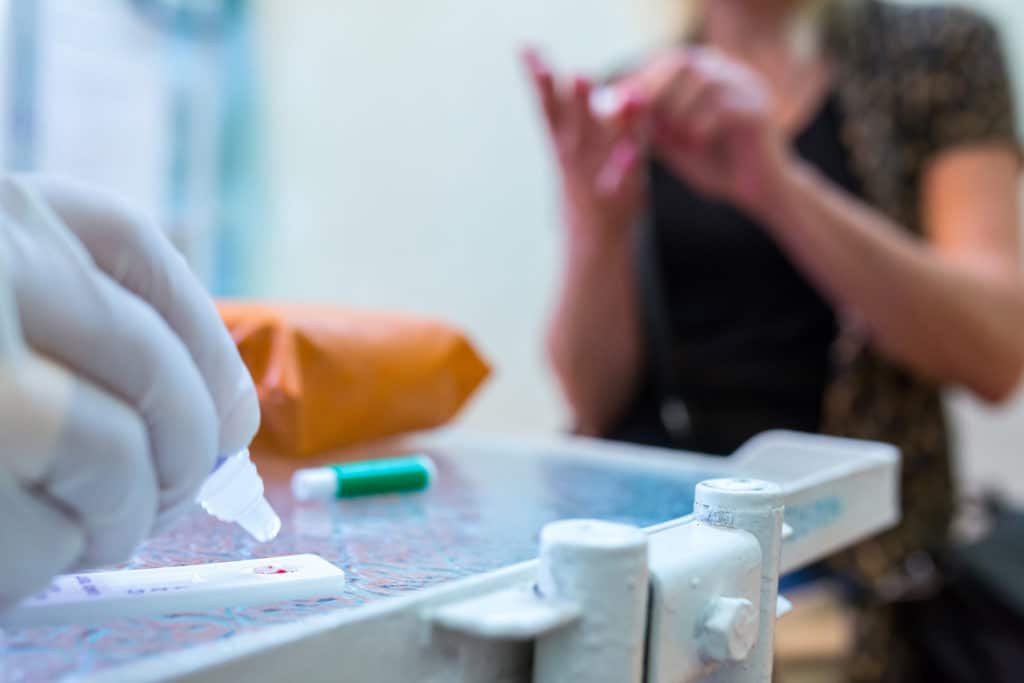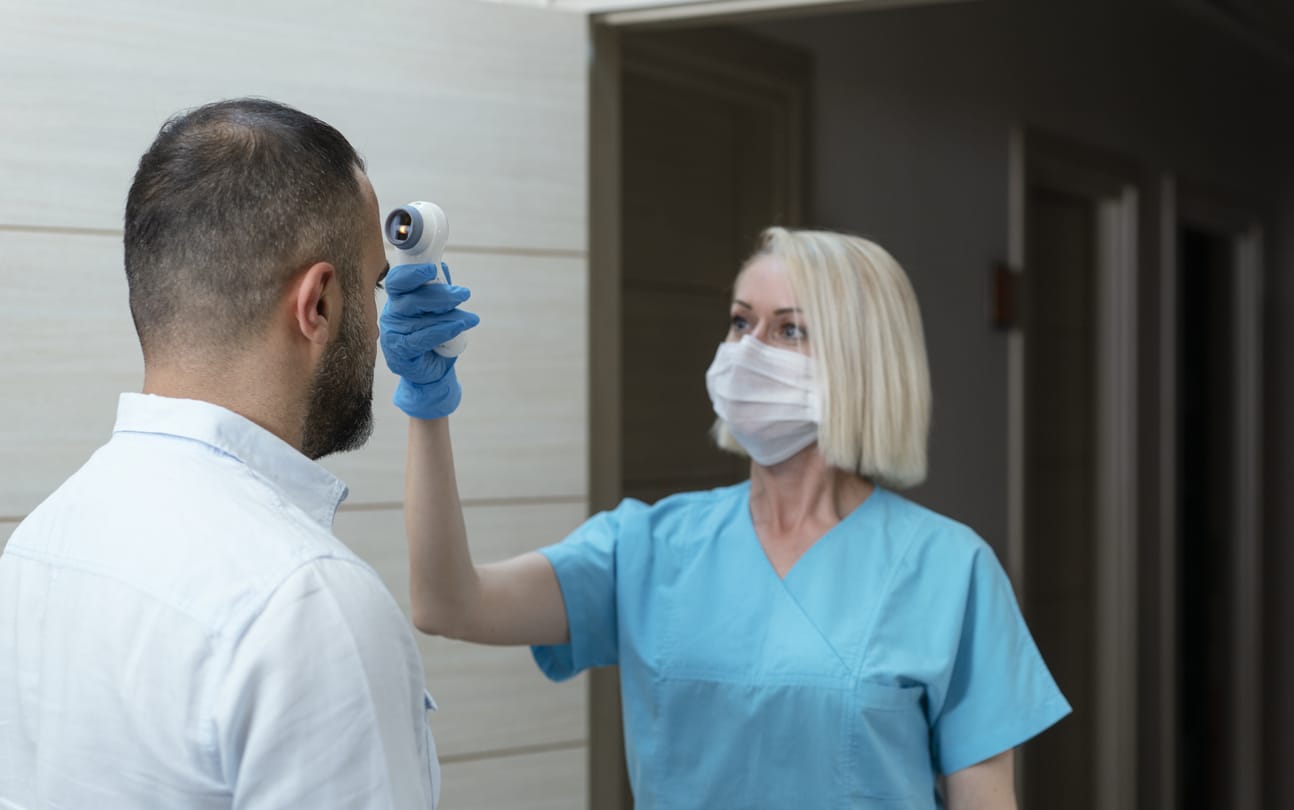As weeks go by and COVID-19 testing becomes more and more available in many parts of the country, many are asking the same question: Could I be immune?
Maybe you had COVID-19 and are hoping you have the antibodies to prove it. Maybe you want to know if that “cold” or “flu” you had a few months ago could have been COVID-19? Or are you hoping you could be one of the lucky ones who got asymptomatic COVID-19 and is immune without knowing it?
There are two main types of coronavirus tests available. One tests for active COVID-19 (do you have the disease right now?). The other tests for antibodies (has your body been exposed to the virus and developed an immune response to it?). Here’s a run-through of what the different coronavirus tests mean, and what a positive test result could mean for you.
What does it mean if I tested positive for COVID-19?
If you tested positive for active COVID-19 infection, this means that genetic material from SARS-CoV-2, the virus that causes COVID-19, was found on a swab that was inserted into your nostril, upper airway, or on a saliva sample.
Like with any test, there is a risk of a false positive result (when you test positive but you do not have the disease) and a false negative result (when you test negative but you actually have the disease). That’s why a COVID-19 test result (either positive or negative) should always be considered along with your symptoms, your contacts, travel, and other factors. In other words, it’s important to see the whole picture.
Am I still contagious if I tested positive?
This depends on how much time has passed since you first developed symptoms or tested positive. The reason why people with COVID-19 need to self-isolate for several weeks is because studies have shown that the SARS-CoV-2 virus can remain active in a person’s sputum (airway mucus and spit) even after symptoms subside. This is something called “viral shedding”: when an infected body spreads viral genetic material into the environment.
Researchers don’t know how long this viral shedding remains contagious. A German study found that viral shedding from the upper airway (nose and throat) was very high during the first week of symptoms, peaking on day 4, but that viral shedding from the lung continued well beyond the end of symptoms.
The current thinking is that a week or more after a person becomes unwell with COVID-19, the body starts to make antibodies against the SARS-CoV-2 virus. As this defense effort gains in strength, the amount of contagious virus in the body becomes less and less. No labs have yet been able to isolate a live (contagious) virus from nose or throat swabs taken more than 10 days after the start of symptoms.
A Chinese study found viral shedding in stool for several weeks after hospital discharge, and even up to 56 days in one case. But experts do not yet see any reason to believe that fecal viral shedding carries a risk of infection.
Do antibodies give me immunity to COVID-19 reinfection?

Here’s the short answer: The CDC’s official position is that even if you have recovered from COVID-19 and tested positive for antibodies, you should continue to protect yourself against the coronavirus as there is no firm evidence yet that antibodies to SARS-CoV-2 protect against reinfection. The American Medical Association has also cautioned that antibody tests should not be used to determine COVID-19 immunity or to make decisions about discontinuing social distancing or returning to work.
On the plus side, despite an initial scare suggesting that people who recovered from COVID-19 and tested negative could test positive again, there is no evidence yet that reactivation or reinfection is happening. These cases of “reinfection” are more likely than not due to prolonged viral shedding and imperfect sampling techniques.
This makes sense to virologists and epidemiologists. Most viral infections (including other coronaviruses) behave in this way: They grant immunity to those who have been infected with the virus for some amount of time.
But how long is “some amount of time”? How long can antibodies confer immunity for and do you need a certain level of antibodies in the blood to be immune? None of this is fully understood yet. All of this also means that there isn’t enough evidence to say that being infected once means you can’t be reinfected again.
In addition, there’s the issue of the accuracy of the antibody tests, in particular the positive predictive value. This tells us how likely a person is to actually have the disease if they have a positive test. It is based on the true positive rate (when a test correctly identifies someone with the disease as positive), the false positive rate (when a test incorrectly identifies someone as positive when they are in fact negative), and — crucially — how common (prevalent) the disease is in the population. In the case of the coronavirus antibody test, a false positive could falsely reassure someone that they are immune when in fact they haven’t actually been exposed to the virus.
The estimated positive predictive value for the antibody test is just that — an estimate. It varies depending on the antibody test you take and, most importantly, the prevalence of SARS-CoV-2 infection in your area.
“But wait!” you say. “No one knows the true prevalence.” Exactly. And until we do, we won’t have accurate information about how good any tests are at correctly picking out people with antibodies, and those without.
If you’ve had COVID-19 or tested positive, when is it safe for you to be in public?
If you have had COVID-19, knowing when it is safe to come out of self-isolation will depend on a few different things.
- Whether you had COVID-19 or just tested positive
- Whether you had COVID-19 confirmed by testing
- Whether you had COVID-19 diagnosed without a test
Here’s the latest guidance from the CDC:
If you had a positive lab test for COVID-19 but did not have any symptoms, you are safe to be in public once:
- Ten days have passed since your first positive COVID-19 test, as long as you have not been ill.
- You’ve had at least two negative test results collected at least 24 hours apart (these must be FDA Emergency Use Authorized COVID-19 tests).
But, if you’ve had any symptoms at all, read on.
If you had COVID-19 and have access to testing, you are safe to be in public once you meet all three of these conditions:
- Your fever is normal for 3 days (72 hours) without taking fever-reducing medications like acetaminophen (Tylenol) or ibuprofen (Advil).
- Your breathing has returned to normal (you don’t have any cough or breathlessness).
- You have had at least two negative test results collected at least 24 hours apart (these must be FDA emergency use authorized COVID-19 tests).
If you had COVID-19 but don’t have access to testing, you are safe to be in public once you meet all three of these conditions:
- At least 10 days have passed since you first had symptoms of COVID-19 or since you first tested positive for COVID-19.
- It has been at least 3 days (72 hours) since your fever was high, without taking fever-reducing medications such as acetaminophen (Tylenol) or ibuprofen (Advil).
- Your breathing has returned to normal (no cough or breathlessness).
When you come out of self-isolation, all the usual rules about keeping yourself and others safe from COVID-19 still apply.
- Face coverings are here to stay: Wear a face mask in any public setting when you cannot keep a 6 foot distance.
- Wash your hands often and keep your hands away from your face, eyes, and nose.
- Clean and disinfect high-traffic surfaces in your living areas and car daily.
- And finally, as before, if you develop symptoms of COVID-19, you should stay home and self-quarantine away from others in your home for 2 weeks.
This article originally appeared on GoodRx.com

Dr. Sophie Vergnaud, MBBS
Clinical Physician
Clinical expert on the GoodRx Research team. She specializes in pulmonology and all things internal medicine.


